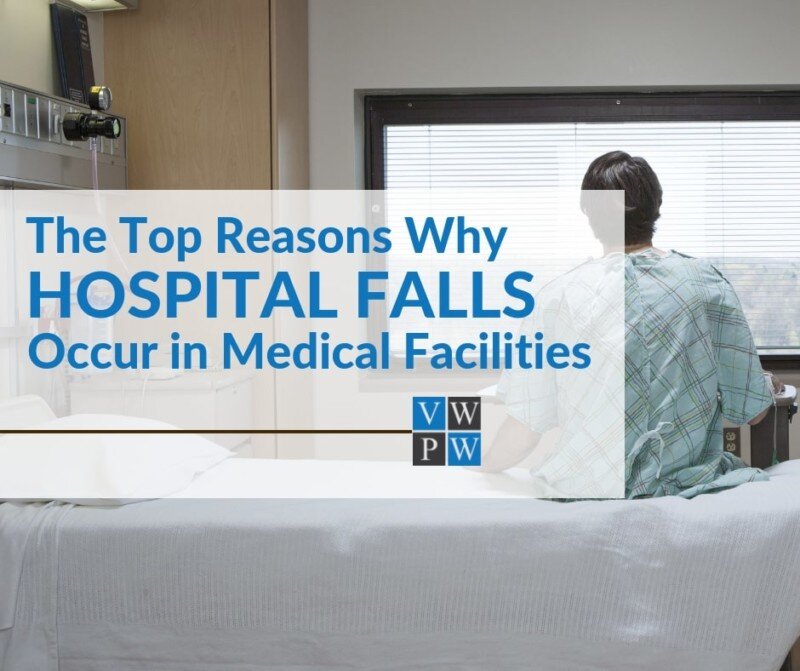Between 700,000 and 1 million patients suffer a fall (specifically, an unplanned descent to the floor that can result in injury) in U.S. hospitals each year. Between 30 and 51 percent of falls result in an injury. Hospital falls are a serious concern for patients today. Preventing patients from falling during their hospital stay has been an elusive goal for many hospitals. Falls are a high-risk, high-cost, complex problem. Several factors contribute to sustaining a fall in a hospital including, but not limited to, the following:
- an aging population
- rising patient acuity
- nurse shortages
- an inefficient work environment for caregivers
- lack of hospital leadership to establish a safe climate culture
Patient falls don’t just happen because of intrinsic factors, like chronic illness or previous fall history. Instead, patient falls are usually caused by multiple factors.
Do you or a loved one have question pertaining to hospital falls? Contact us here for a free consultation.
Failure to Call a Nurse for Assistance
When patients become disoriented or confused, they may not realize where they are or that they even need to use the nurse call button before attempting to stand up and walk. Other patients may stubbornly feel they don’t need help, refusing it, and will attempt to get out of bed themselves when they don’t have the ability or strength yet to walk alone. The assistance of a nurse for patients like these would prevent the majority of falls like these from occurring. However, sometimes patients are left with no other choice than to attempt walking on their own if hospital personnel take too long to come and help them. Unfortunately, this is sometimes the case. Hospitals also have the option now of setting bed alarms that will alert them when a patient has left their bed. These alarms should be used to prevent patients from refusing to call for nurse assistance.
The Bed-Exit Alarm is Not Set
Bed-exit alarms help alert staff to bed-exiting behavior in fall-risk patients, such as getting out of bed or moving positions. Patients who wander away from their bed for reasons like incontinence and choose not to call for assistance many times end up tripping or falling. Bed-exit alarms can also alert personnel to rolling or unwanted movement towards the edge of the hospital bed, like when an immobile patients may be close to falling off the bed. A mishap that occurs in hospitals is when the bed-exit alarm on a hospital bed is accidentally not reset. This exposes patients to risk. When the alarm is not reset, movement can go unnoticed, and if a patient has fallen it can go unnoticed for some time. Alarms that automatically reset themselves can prevent the falls that occur when personnel has forgotten to reset them. This is a safety must in hospitals today.
Patients are on High Risk Medication
Medications like sedatives and antidepressants can can significantly increase a patient’s chances of falling. They can make a patient dizzy and confused, or make it very difficult for patients to be mobile. Patients on high risk medications like these most often experience hospital falls. Hospitals should be most concerned for the safety of these patients. They should be assessed as the highest fall risks and preventative measures should be in place. These might include adjustable low hospital beds, bed-exit alarms, and scheduled toileting.
Patient Inaccurately Assessed
Sometimes hospital personnel fail to assess a patient as high risk for falling when the patient enters the hospital. Other times, a patient might be assessed as a low fall risk when the patient clearly doesn’t have the ability to stand or walk. The patient then may attempt this on their own, resulting in a fall and a possibly serious injury. When wrongly assessed as a low-risk fall patient, a patient who is actually at high risk for falling does not get the lower hospital bed, the non-slip footwear, and is often not close to the nurses’ station where he can be quickly helped to the bathroom. These preventable measures are not available when they are really needed, and all of this because one staff member gave the wrong assessment. Fall risk for patients should not only be assessed during intake, but throughout the patient’s stay at the hospital.
Delayed Response when the Nurse is Called
Patients who become frustrated while waiting for a nurse’s response to the call bell may attempt to leave the bed unassisted for various reasons. When it is known that a patient is agitated or suffers from incontinence, he or she should be moved closer to the nurse’s station. A bed-exit alarm must also be used to detect a patient attempting to leave the bed. Nurse’s must be able to respond to patients within a reasonable amount of time, otherwise they are putting patients at risk.
By: Kay Van Wey | Updated: June 9, 2020



